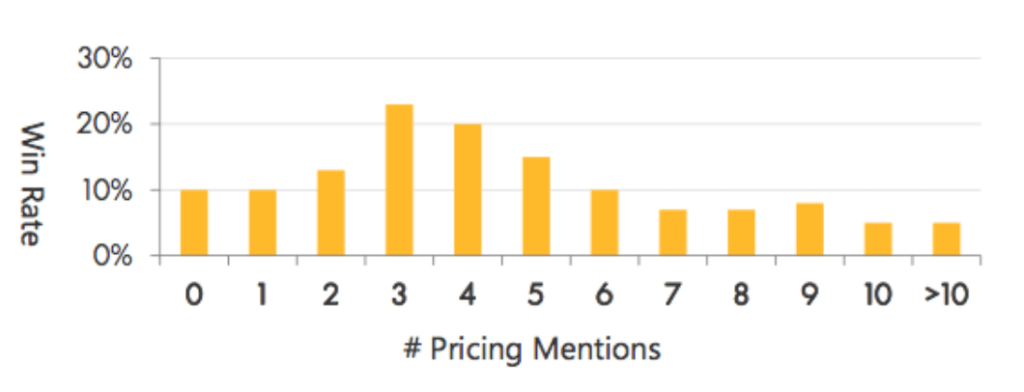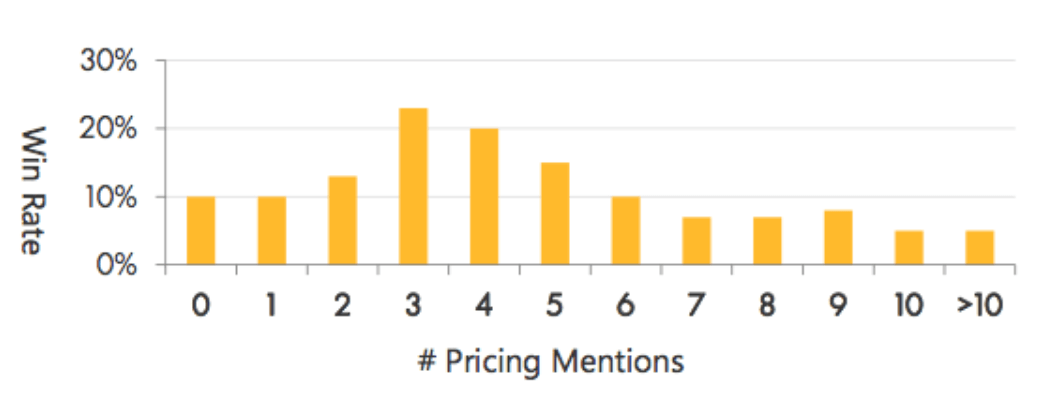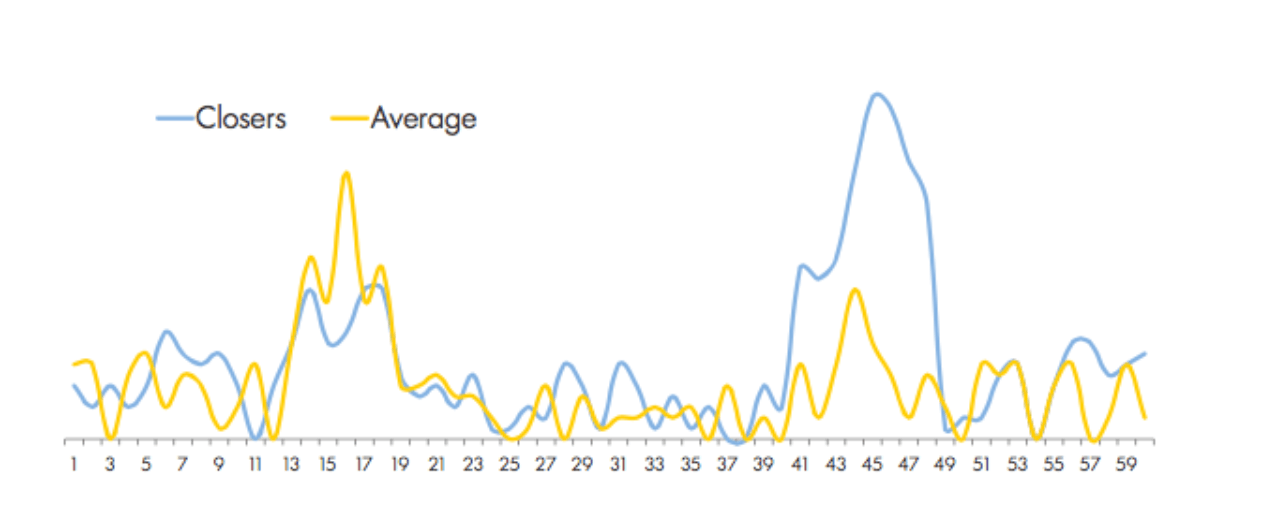How top sales reps discuss pricing: data-driven strategies

. . .
“The technology is awesome. But how much does it cost?” demanded the prospect from the other side of the table. His eyebrows were furrowed, and I could tell he was anxious. Looking at my watch, we were 42 minutes into a long sales call where we had a lively discussion about Gong’s conversation intelligence platform. This type-A, charismatic VP of Sales prospect had asked every question in the book. So I was surprised that a pricing question came up so late in the game. And having my knowledge of the research data that reveals when top sales professionals reveal price in their sales calls, I had no reservations spelling out our pricing model in great detail. I told my forward-leaning prospect what the price was, and watched the tension melt from his shoulders. His facial expression dissolved from anxious anticipation to pleasantly surprised. “Okay,” he said with relief. “That’s not too bad for what you guys are delivering. Send me the contract.”Data-Driven Sales Pricing Discussions
Pricing is a delicate subject in sales. Simply positioning and framing your pricing model in a different light can have a massive impact on sales outcomes… without even changing the pricing itself. So what does data have to say about how sales professionals should handle pricing discussions to increase their chances of success? Analyzing 25,537 B2B sales conversations using artificial intelligence has given us our first glimpse in answering that question. Let’s take a look…How Often Should You Discuss Pricing?
For the highest win-rates, the data from our first cohort of sales call analysis tells us pricing should be mentioned between 3-4x in a B2B sales call. I have to make a point before we move on: it’s important to note that correlation does not always indicate causation.
That said, when pricing is mentioned or discussed less than 3x or more than 4x, win-rates tend to decline, as you can see in the above chart.
The key takeaway has to do with reading prospect buying signals.
It’s best to treat this insight as something to keep a lookout for, rather than a sales technique you should actively strive to manufacture.
In other words, if pricing comes up 3-4x in a call where you presented a solution, treat that as a buying signal and prioritize the opportunity accordingly.
I have to make a point before we move on: it’s important to note that correlation does not always indicate causation.
That said, when pricing is mentioned or discussed less than 3x or more than 4x, win-rates tend to decline, as you can see in the above chart.
The key takeaway has to do with reading prospect buying signals.
It’s best to treat this insight as something to keep a lookout for, rather than a sales technique you should actively strive to manufacture.
In other words, if pricing comes up 3-4x in a call where you presented a solution, treat that as a buying signal and prioritize the opportunity accordingly.
When Should You Discuss Pricing?
I’m about to share with you the insight that allowed me to deliver pricing with a sense of confidence in the story at the beginning of this article. The highest performing sales reps (those with the highest win-rates, most revenue generation, and shortest sales cycles) habitually discuss pricing in the same time window of their calls: The top performers by and large most commonly “talk price” between the 40-49 minute mark of their long-form sales conversations.
Remember the story at the beginning? The prospect asked about price at the 42 minute mark.
Right smack-dab in the middle of the “window of opportunity.”
Also note that both top performers and average performers talk pricing with some frequency between the 13-20 minute mark.
I’m not sure what we can learn from that or why that is, but interesting nonetheless (if you have ideas on why that is, comment below).
You’ll notice average and low performers tend to distribute their pricing discussions more evenly throughout their calls, whereas–for the most part–the top reps hold off until the end.
The top performers by and large most commonly “talk price” between the 40-49 minute mark of their long-form sales conversations.
Remember the story at the beginning? The prospect asked about price at the 42 minute mark.
Right smack-dab in the middle of the “window of opportunity.”
Also note that both top performers and average performers talk pricing with some frequency between the 13-20 minute mark.
I’m not sure what we can learn from that or why that is, but interesting nonetheless (if you have ideas on why that is, comment below).
You’ll notice average and low performers tend to distribute their pricing discussions more evenly throughout their calls, whereas–for the most part–the top reps hold off until the end.
The Takeaway
What you should do with this data is establish value first, then have your pricing discussion. But what if your prospect asks about pricing early on? There are many techniques for handling that situation you can read about elsewhere. But the advice I’d like to leave you with has a preventative nature. You can “architect” your sales conversations so pricing naturally comes up at the end (and the prospect doesn’t ask about it before then) by getting agreement on the call’s agenda (which will include pricing at the end). Add an agenda to the calendar invite for the call such as this:- We’ll spend some time understanding your business
- We’ll go over the product, and how it fits in with your situation
- We’ll cover pricing and final questions at the end during the last 10 minutes
- Increase sales win rates – How to Increase Sales Win-Rates By 32% Using “Risk-Reversal Language”
- First sales call – 30 or 60 min? New data shows how long your first sales call should be
- B2B Sales Intelligence – Gong.io Introduces Real-time Conversation Intelligence for B2B Sales Teams